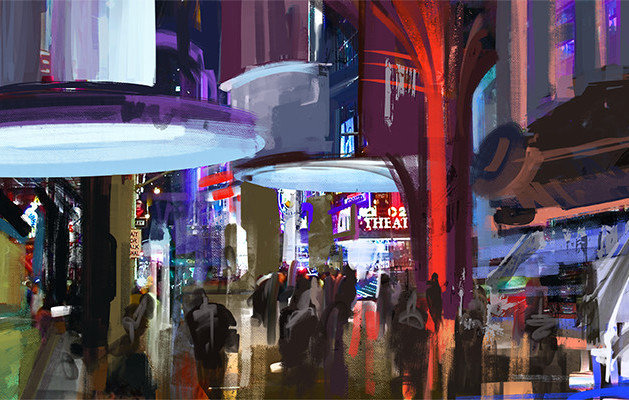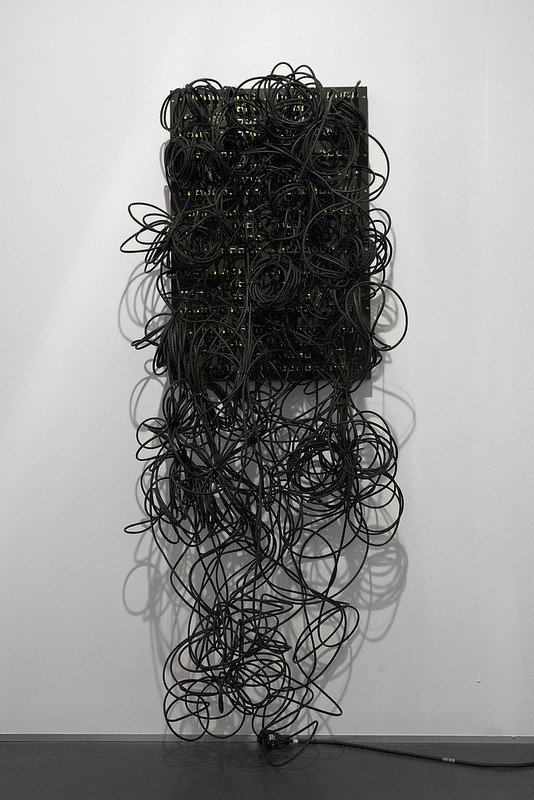When I started Exolymph, I thought about making it a links newsletter instead of a random-reflections newsletter. I decided not to do that for two reasons:
- There are also already tons of links newsletters, and far fewer newsletters that offer a five- or ten-minute shot of ideas. (Glitchet is an excellent links newsletter that also features weird net art.)
- As a person who subscribes to many links newsletters, I know that they can be stressful. There are more interesting articles than I have time to read.
However. I’ve come across so many incredible stories over the past forty-eight hours that I can’t narrow it down. (I did limit the Trump content.) Not all of these articles were published recently, but they’re all indicative of The State of the World, Cyber Edition.
Don’t click on anything that doesn’t truly grab you, just let the deluge of headlines keep flowing…
“Who is Anna-Senpai, the Mirai Worm Author?”
Brian Krebs, a respected cybersecurity journalist, investigated the botnet that knocked his site down with a massive DDoS attack last September. The result is a bizarre real-life whodunnit that takes place almost entirely online, replete with braggadocious shitposting on blackhat forums and the tumbling of shaky Minecraft empires. SO GOOD. (Also, buy his book!)
“Security Economics”
Spammers and hackers are just in it to get rich, or whatever the Eastern European equivalent is. (That stereotype exists for a reason. Again, buy Krebs’ book!) This is a quick overview of the players’ financial motives from an industry participant.
“Scammers Say They Got Uber to Pay Them With Fake Rides and Drivers”
The headline sums it up pretty well. Bonus: identity-theft slang!
“Doomsday Prep for the Super-Rich”
Both hilarious and depressing, my favorite combo. Silicon Valley billionaires and multimillionaires are buying up land in New Zealand, stockpiling weapons, and getting surgery to fix their eyesight. Their paranoia — or is it pragmatism? — is framed as a reaction to Trump’s election. Here’s a more explicitly political companion piece, if you want that.
“This Team Runs Mark Zuckerberg’s Facebook Page”
As the wise elders have counseled us, “He who leads Brand… must become Brand.” Zuck is taking that ancient adage seriously. The kicker: “There are more than a dozen Facebook employees writing Mark Zuckerberg’s posts or scouring the comments for spammers and trolls.” MORE THAN TWELVE HUMAN BEINGS.
“Advanced Samizdat Techniques: Scalping Millennials”
Warning: authored by a notorious neo-Nazi. Everything weev does is evil. But also brilliant. Here we have an example of both, which is funny if you’re able to momentarily suspend your sense of decency. (I didn’t cloak the link, because it leads to Storify rather than a Nazi-controlled website.)
“World’s main list of science ‘predators’ vanishes with no warning”
Either someone is suing the poor guy who compiled it, or… threatening his family? Let’s hope the situation isn’t that sinister.
“Dictators use the Media Differently than Narcissists and Bullies”
Guess which self-obsessed politician this is about? (Granted, all politicians are more self-obsessed than the average person. But the MAGNITUDE, my friends, the magnitude!)
“RAND’s Christopher Paul Discusses the Russian ‘Firehose of Falsehood'”
A counterpoint to the previous link.
“How Casinos Enable Gambling Addicts”
Modern slot machines are expertly engineered to trick players and engender addiction. (The writer strongly implies a regulatory solution, which I don’t endorse, but the gambling industry is definitely diabolical.)
Lastly — most crucially — Ted Cruz totally clobbered Deadspin on Twitter. Aaand that’s it. Enjoy your Wednesday.
Header artwork by Emre Aktuna.











